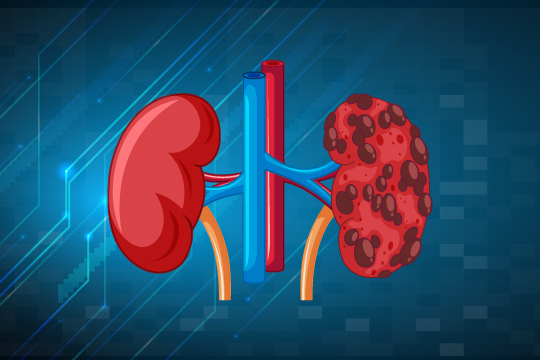Home > Disease and Treatments > The Treatment of Fibroids:Uterine Artery Embolization through Interventional Radiology
The Treatment of Fibroids:Uterine Artery Embolization through Interventional Radiology
Fibroids are non-cancerous growths that develop in the uterus, affecting millions of women worldwide. These benign tumors, also known as uterine fibroids or leiomyomas, vary in size and number and can cause a range of symptoms, including:
- Heavy bleeding: This can lead to anemia and fatigue.
- Pelvic pain: Persistent or intermittent pain in the pelvic region.
- Discomfort: A feeling of fullness or pressure in the lower abdomen.
- Frequent urination: Increased pressure on the bladder can cause a frequent need to urinate.
- Constipation: Fibroids can press against the rectum, causing difficulty with bowel movements.
Traditional Treatment Options
Historically, surgery was often the primary option for treating fibroids. Common surgical procedures included:
Myomectomy: Removal of fibroids while preserving the uterus.
Hysterectomy: Complete removal of the uterus, which eliminates fibroids but also ends the possibility of pregnancy.
However, advances in medical technology and interventional radiology have introduced less invasive methods for managing and treating fibroids.
Uterine Artery Embolization (UAE): A Minimally Invasive Solution
Uterine Artery Embolization (UAE) is a minimally invasive procedure that provides an effective alternative to surgery. During UAE tiny particles are inserted through a catheter which are guided to the arteries supplying blood to the fibroids.These particles block the blood flow to the fibroids, causing them to shrink and die.
Benefits of UAE include:
- Reduced symptoms: Significant relief from heavy bleeding and pelvic pain.
- Preservation of fertility: Unlike hysterectomy, UAE does not remove the uterus, allowing the possibility of future pregnancies.
- Elimination of surgical risks: Avoids the complications associated with open surgery.
- Quicker recovery: Patients typically experience a faster return to normal activities.
Other Interventional Radiology Treatments
Interventional radiology offers several minimally invasive treatments for various women's health issues with providing effective alternatives to traditional surgical procedures
- Pelvic Congestion Syndrome (PCS) treatment: This involves procedures to alleviate chronic pelvic pain caused by varicose veins in the pelvic region.
- Fibroid embolization: Similar to UAE, this procedure specifically targets and treats fibroids.
- Ovarian vein embolization: Used to treat pelvic pain and varicose veins by blocking abnormal blood flow in the ovarian veins.
Benefits of Interventional Radiology
- Minimally invasive: Procedures are performed through tiny incisions, reducing the risk of infection and complications.
- Reduced recovery time: Patients can often return to their daily activities much sooner than with traditional surgery.
- Less pain: Minimally invasive techniques typically result in less postoperative pain and discomfort.
- Preservation of fertility: Many procedures are designed to maintain reproductive health.
- Effective symptom relief: Provides significant improvement in symptoms, enhancing the quality of life.
Disclaimer
This is general information about the disease and treatment options, please consult a specialist doctor for right diagnosis and treatment which may vary based on each patient. Book an appointment with your specialist to learn more
Royalcare Hospital's interventional radiology department is dedicated to offering a range of innovative treatments for women's health issues, focusing on minimally invasive approaches. If you are experiencing symptoms related to fibroids or other conditions, consult our expert team to explore interventional radiology solutions. Take control of your health and well-being with advanced, patient-centered care.





